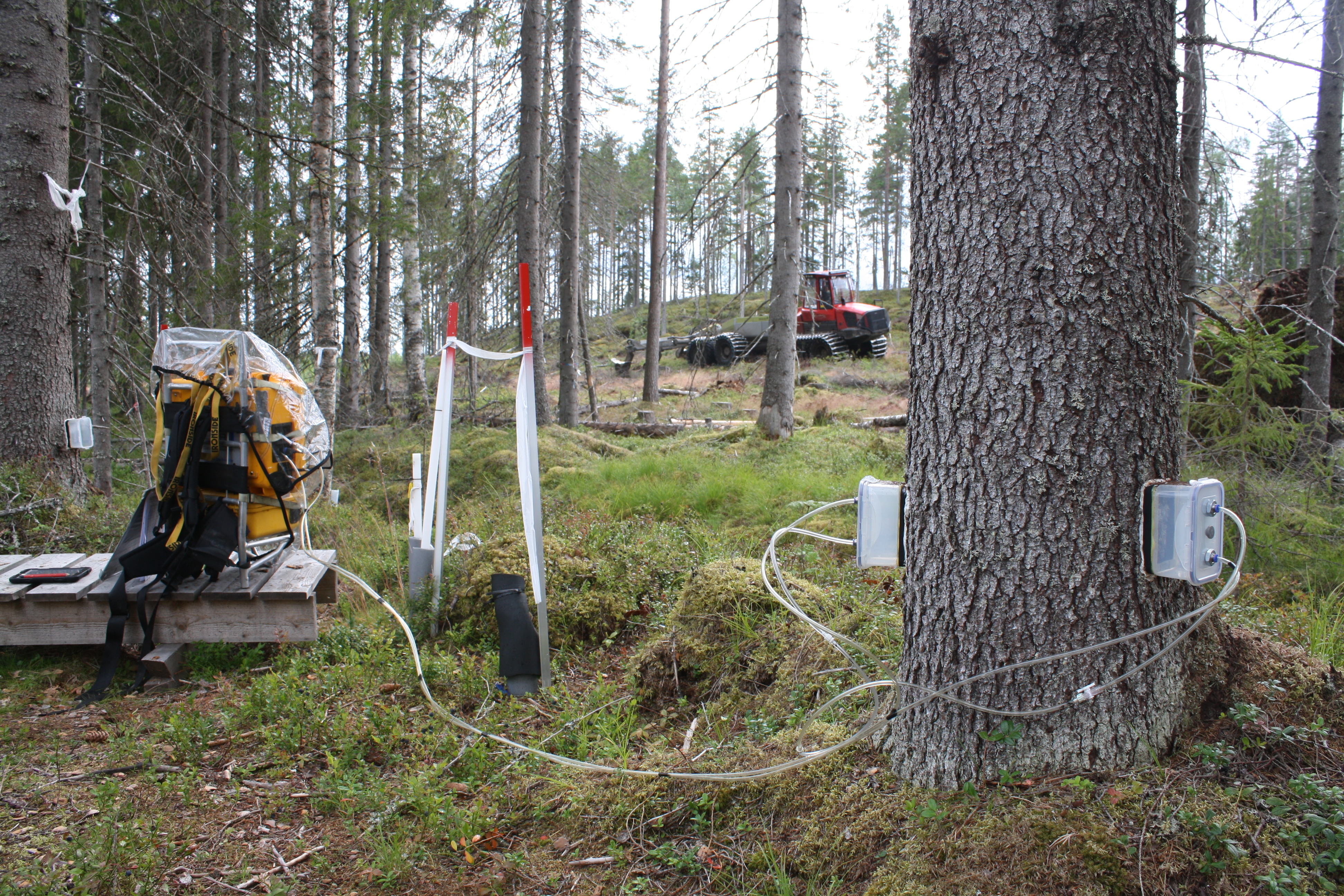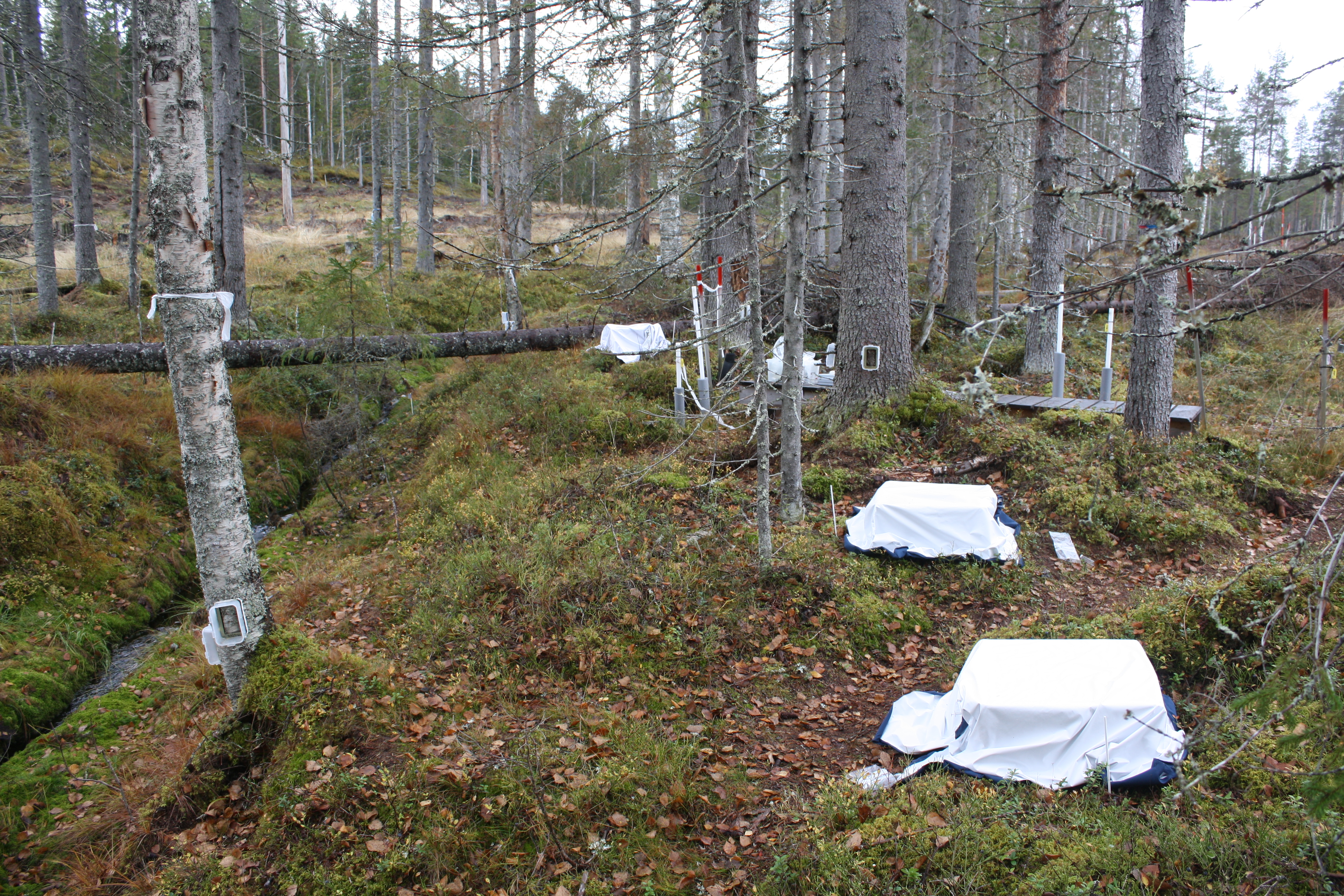Forestry effects on greenhouse gas cycling in riparian buffer zones
 Forest clear-cutting often increases the production and leaching of organic carbon, nutrients and greenhouse gases in groundwater. The fate of these substances as they are transported from upland clear-cut areas through riparian forest buffer zones to surface waters is poorly understood, but highly relevant for watershed-scale carbon and greenhouse gas budgets. In the Trollberget Experimental Area, we perform a watershed-scale experiment to investigate the effect of clear-cutting on greenhouse gas dynamics in riparian forest buffer zones along a headwater stream. The experiment has a Before/After-Control/Impact design with treatments to compare 5 m and 15 m wide riparian buffers. Sampling occurs weekly to monthly during April-October before (2020) and after (2021-2023) clear-cutting performed in February 2021. We measure concentrations of carbon dioxide (CO2), methane (CH4) and nitrous oxide (N2O) in soils and groundwater along four transects from the clear-cut to the stream. We also measure fluxes of these gases between the atmosphere and the forest floor, as well as tree stems, using flux chamber techniques. The results of this experiment will be important for designing riparian buffer zones that minimize forestry-related greenhouse gas emissions to the atmosphere. The study is funded by Skogssällskapet, Sveriges Geologiska Undersökning, Carl Tryggers Stiftelse and Stiftelsen Extensus.
Forest clear-cutting often increases the production and leaching of organic carbon, nutrients and greenhouse gases in groundwater. The fate of these substances as they are transported from upland clear-cut areas through riparian forest buffer zones to surface waters is poorly understood, but highly relevant for watershed-scale carbon and greenhouse gas budgets. In the Trollberget Experimental Area, we perform a watershed-scale experiment to investigate the effect of clear-cutting on greenhouse gas dynamics in riparian forest buffer zones along a headwater stream. The experiment has a Before/After-Control/Impact design with treatments to compare 5 m and 15 m wide riparian buffers. Sampling occurs weekly to monthly during April-October before (2020) and after (2021-2023) clear-cutting performed in February 2021. We measure concentrations of carbon dioxide (CO2), methane (CH4) and nitrous oxide (N2O) in soils and groundwater along four transects from the clear-cut to the stream. We also measure fluxes of these gases between the atmosphere and the forest floor, as well as tree stems, using flux chamber techniques. The results of this experiment will be important for designing riparian buffer zones that minimize forestry-related greenhouse gas emissions to the atmosphere. The study is funded by Skogssällskapet, Sveriges Geologiska Undersökning, Carl Tryggers Stiftelse and Stiftelsen Extensus.

Links to related websites